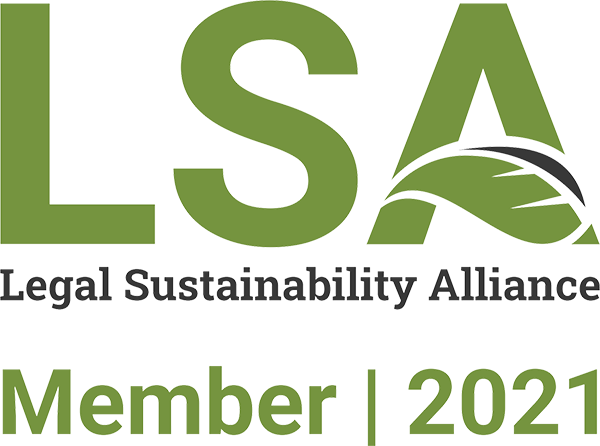Law Business Research
Reproduced with permission from Law Business Research Ltd. ftis article was first published in
fte Energy Regulation and Markets Review, 2nd edition (published in June 2013 – editor David L Schwartz).
For further information please email Adam.Sargent@lbresearch.com
The Energy Regulation and Markets Review
David L Schwartz Second Edition Editor
Law Business Research Ltd
ThE Law REviEwS
ThE MERgERS AnD AcquiSiTionS REviEw ThE RESTRucTuRing REviEw
ThE PRivATE coMPETiTion EnFoRcEMEnT REviEw ThE DiSPuTE RESoLuTion REviEw
ThE EMPLoyMEnT LAw REviEw
ThE PuBLic coMPETiTion EnFoRcEMEnT REviEw ThE BAnking REguLATion REviEw
ThE inTERnATionAL ARBiTRATion REviEw ThE MERgER conTRoL REviEw
ThE TEchnoLogy, MEDiA AnD TELEcoMMunicATionS REviEw
ThE inwARD invESTMEnT AnD inTERnATionAL TAxATion REviEw
ThE coRPoRATE govERnAncE REviEw ThE coRPoRATE iMMigRATion REviEw
ThE inTERnATionAL invESTigATionS REviEw ThE PRoJEcTS AnD conSTRucTion REviEw ThE inTERnATionAL cAPiTAL MARkETS REviEw
ThE REAL ESTATE LAw REviEw
ThE PRivATE EquiTy REviEw
ThE EnERgy REguLATion AnD MARkETS REviEw ThE inTELLEcTuAL PRoPERTy REviEw
ThE ASSET MAnAgEMEnT REviEw
ThE PRivATE wEALTh AnD PRivATE cLiEnT REviEw ThE Mining LAw REviEw
ThE ExEcuTivE REMunERATion REviEw
ThE AnTi-BRiBERy AnD AnTi-coRRuPTion REviEw ThE cARTELS AnD LEniEncy REviEw
ThE TAx DiSPuTES AnD LiTigATion REviEw ThE LiFE SciEncES LAw REviEw
ThE inSuRAncE AnD REinSuRAncE LAw REviEw ThE govERnMEnT PRocuREMEnT REviEw
www.fteLawReviews.co.uk
PuBLiShER gideon Roberton
BuSinESS DEvELoPMEnT MAnAgERS
Adam Sargent, nick Barette
MARkETing MAnAgERS
katherine Jablonowska, ftomas Lee, James Spearing
PuBLiShing ASSiSTAnT Lucy Brewer
PRoDucTion cooRDinAToR Lydia gerges
hEAD oF EDiToRiAL PRoDucTion Adam Myers
PRoDucTion EDiToR Joanne Morley
SuBEDiToR charlotte Stretch
EDiToR-in-chiEF callum campbell
MAnAging DiREcToR Richard Davey
Published in the united kingdom by Law Business Research Ltd, London
87 Lancaster Road, London, w11 1qq, uk
© 2013 Law Business Research Ltd www.fteLawReviews.co.uk
no photocopying: copyright licences do not apply.
fte information provided in this publication is general and may not apply in a specific situation. Legal advice should always be sought before taking any legal action based on the information provided. fte publishers accept no responsibility for any acts or
omissions contained herein. Although the information provided is accurate as of May 2013, be advised that this is a developing area.
Enquiries concerning reproduction should be sent to Law Business Research, at the address above. Enquiries concerning editorial content should be directed
to the Publisher – gideon.roberton@lbresearch.com iSBn 978-1-907606-68-7
Printed in great Britain by Encompass Print Solutions, Derbyshire
Tel: 0844 2480 112
fte publisher acknowledges and thanks the following law firms for their learned assistance throughout the preparation of this book:
AFRiDi & AngELL AnDERSon MŌRi & ToMoTSunE
AngoLA LEgAL ciRcLE ADvogADoS ARzingER
AvEnT ADvokAT BAnwo & ighoDALo BRuun & hJEJLE
D’EMPAiRE REynA ABogADoS
DokovSkA, ATAnASov AnD PARTnERS EngLing, STRiTTER AnD PARTnERS
góMEz-Pinzón zuLETA ABogADoS SA gonzÁLEz cALviLLo, Sc
göRg PARTnERSchAFT von REchTSAnwäLTEn hogAn LovELLS
kvALE ADvokATFiRMA DA LALivE
LAThAM & wATkinS
L o BAPTiSTA SchMiDT vALoiS MiRAnDA FERREiRA AgEL
MAnnhEiMER SwARTLing MinTER ELLiSon
MoRAiS LEiTão, gALvão TELES, SoARES DA SiLvA & ASSociADoS, SociEDADE DE ADvogADoS RL
MozAMBiquE LEgAL ciRcLE ADvogADoS oSBoRnE cLARkE
PAkSoy ATToRnEyS AT LAw
PAz hoRowiTz RoBALino gARcéS ATToRnEyS AT LAw PELiFiLiP
PJS LAw
REM LAw conSuLTAncy RuSSELL McvEAgh
STEk STikEMAn ELLioTT LLP
TRiLEgAL
whiTE & cASE LLP (SouTh AFRicA) yoon & yAng LLc
zuL RAFiquE & PARTnERS
Editor’s Preface……………………………………………………………………………… vii
David L Schwartz
Chapter 1 AngoLA………………………………………………………………. 1
Catarina Levy Osório and Helena Prata
Chapter 2 AuSTRALiA………………………………………………………… 14
Mitzi Gilligan, Andrew Brookes and Darshini Nanthakumar
Chapter 3 BRAziL………………………………………………………………. 34
Guilherme Guerra D’Arriaga Schmidt
Chapter 4 BuLgARiA………………………………………………………….. 47
Mihail Boyadjiev
Chapter 5 cAnADA…………………………………………………………….. 57
Patrick Duffy, Brad Grant, Erik Richer La Flèche and Glenn Zacher
Chapter 6 coLoMBiA………………………………………………………….. 73
Patricia Arrázola-Bustillo and Fabio Ardila
Chapter 7 DEnMARk………………………………………………………….. 84
Christian Sinding, Nicolaj Kleist and Morten Ruben Brage
Chapter 8 EcuADoR…………………………………………………………… 95
Jorge Paz Durini, Daniel Robalino, Leyre Suárez and Rafael Valdivieso
Chapter 9 FRAncE…………………………………………………………….. 104
Fabrice Fages and Myria Saarinen
Chapter 10 gERMAny…………………………………………………………. 116
Achim Compes, Carmen Schneider and Thoralf Herbold
Chapter 11 ghAnA……………………………………………………………… 128
Emmanuel Sekor and Enyonam Dedey-Oke
Chapter 12 inDiA……………………………………………………………….. 141
Akshay Jaitly, Sitesh Mukherjee, Neeraj Menon and Rashi Ahooja
Chapter 13 iTALy……………………………………………………………….. 154
Simone Monesi, Piero Viganò and Giovanni Penzo
Chapter 14 JAPAn………………………………………………………………. 169
Reiji Takahashi, Atsutoshi Maeda, Shun Hirota, Yuko Suzuki and Masato Sugihiro
Chapter 15 koREA………………………………………………………………. 181
Wonil Kim and Kwang-Wook Lee
Chapter 16 MALAySiA……………………………………………………….. 194
Lukman Sheriff Alias
Chapter 17 MExico…………………………………………………………….. 204
Gonzalo A Vargas
Chapter 18 MozAMBiquE…………………………………………………… 215
Fabrícia de Almeida Henriques and Paula Duarte Rocha
Chapter 19 nAMiBiA…………………………………………………………… 225
Axel Stritter
Chapter 20 nEThERLAnDS…………………………………………………. 239
Jan Erik Janssen and Martha Brinkman
Chapter 21 nEw zEALAnD………………………………………………….. 248
Nick Hegan, Mei Fern Johnson and Nicola Purvis
Contents
Chapter 22 nigERiA……………………………………………………………. 260
Ken Etim and Ayodele Oni
Chapter 23 noRwAy……………………………………………………………………………. 272
Per Conradi Andersen and Christian Poulsson
Chapter 24 PhiLiPPinES………………………………………………………. 282
Monalisa C Dimalanta and Najha Katrina J Estrella
Chapter 25 PoRTugAL………………………………………………………… 297
Nuno Galvão Teles and Ricardo Andrade Amaro
Chapter 26 RoMAniA…………………………………………………………. 310
Lucian Caruceriu and Raluca Golescu
Chapter 27 SouTh AFRicA………………………………………………….. 322
Shamilah Grimwood
Chapter 28 SPAin……………………………………………………………….. 344
Antonio Morales
Chapter 29 SwEDEn…………………………………………………………… 354
Hans Andréasson, Martin Gynnerstedt and Malin Håkansson
Chapter 30 SwiTzERLAnD………………………………………………….. 366
Georges P Racine
Chapter 31 TuRkEy…………………………………………………………….. 378
Zeynel Tunç and Aslı Kehale Altunyuva
Chapter 32 ukRAinE…………………………………………………………… 391
Wolfram Rehbock and Maryna Ilchuk
Chapter 33 uniTED ARAB EMiRATES…………………………………… 410
Masood Afridi and Haroon Baryalay
Chapter 34 uniTED kingDoM……………………………………………… 428
Elisabeth Blunsdon
Chapter 35 uniTED STATES…………………………………………………. 444
Michael J Gergen, Natasha Gianvecchio, Kenneth M Simon and David L Schwartz
Chapter 36 uzBEkiSTAn……………………………………………………… 459
Eldor Mannopov, Shuhrat Yunusov, Anna Snejkova and Ulugbek Abdullaev
Chapter 37 vEnEzuELA………………………………………………………. 469
Arnoldo Troconis
Appendix 1 ABouT ThE AuThoRS………………………………………… 483
Appendix 2 conTRiBuTing LAw FiRMS’ conTAcT DETAiLS….. 507
Editor’s PrEfacE
During our second year of writing and publishing The Energy Regulation and Markets Review, we have seen a profound change in global energy regulation and markets.
From a supply perspective, oil and gas exploration, development and production in certain regions (including North America and in certain African countries) have increased dramatically. In the wake of the Fukushima disaster, many countries have slowed or abandoned their nuclear development programmes, and some have accelerated the retirement of nuclear units. Certain countries have also witnessed extensive retirements of coal-fired generation facilities due to greenhouse gas considerations, increases in coal price relative to the price of natural gas, and flat or decreased demand. Certain renewable subsidies, such as feed-in tariffs and renewable energy credits, as well as utility requirements through renewable portfolio standards to encourage renewable development, have slowed as a result of the continuing financial crisis in Europe.
From a demand perspective, the financial crisis has flattened or reduced demand in some countries. Efforts to encourage conservation and energy efficiency have also had a downward impact on demand. Austerity concerns, however, have slowed down these energy efficiency and conservation subsidies in 2012.
From a reliability perspective, certain countries that experienced widespread outages (such as Korea and India) prioritised grid hardening and reliability measures. Safe and reliable delivery of electricity and natural gas continues to be the hallmark of energy policy and regulation in the industrialised world, as it has been for the past 75 years.
Certain developing countries continue to struggle with mechanisms to encourage infrastructure investment to meet demand, while others face long-standing corruption and other inefficiencies in their energy sectors. Some countries seek to maintain government ownership over utilities, while others seek a combination of public and private involvement to encourage foreign investment.
Countries with active energy markets have sought to balance the desire to maintain low electricity rates for ratepayers with sufficient price signals to encourage new infrastructure investment in generation and transmission. Many markets have developed competitive bid-based electricity auctions to set energy prices, which sometimes include the cost of transmission congestion. A few countries have successfully developed robust capacity markets.
Editor’s Preface
ftese energy and capacity markets tend to be administered by independent or governmental entities that do not have a market position bias. Clearing prices set in these markets are intended to send price signals to maximise short-term decision-making (including for scheduling and dispatching) as well as long-term planning (development of new and upgrading of existing generation and transmission, as well as retirement of facilities that are either no longer needed or are no longer capable of earning sufficient revenue to meet future variable costs).
Cybersecurity threats are exposing the vulnerabilities of our energy networks, and the global economy continues to threaten our ability to obtain the necessary credit to build and finance energy infrastructure.
I would like to thank all of the authors for their thoughtful consideration of these difficult challenges. We look forward to identifying some possible mechanisms to resolve the many dilemmas discussed in these chapters.
David L Schwartz Latham & Watkins LLP Washington, DC
May 2013
Chapter 26
Lucian Caruceriu and Raluca Golescu1Romania
I OVERVIEW
Several legislative changes have been implemented in the energy field during the past 12 months. fte changes that have already come into force include the new electricity and gas law, Law No. 123/2012 (‘the Energy Law’). Some of the main areas bolstered by the new Energy Law are the transposition of the ‘independent system operator’ model, the liberalisation of the electricity and gas markets, strengthening of competition and customer protection. More recently, the renewable power market – the most active part of the energy sector in Romania in the past year – has been affected by the intentions of the Romanian government to implement certain changes to the currently applicable support scheme.
Romania has undertaken, in accordance with the standby agreement with the IMF of 2011, to focus reforms on the energy and transports sectors. Although various reforms have already been implemented, there are many yet to take place, including with respect to regulated prices.
As regards the shale gas industry, although the Romanian government seems fairly open to shale gas prospecting or exploitation on its territory (as oil concession agreements have been already concluded with several investors), public pressure could lead Romania to join the states that have already issued bans by way of moratoria on shale gas.
1 Lucian Caruceriu and Raluca Golescu are associates at PeliFilip.
II REGULATION
- fte regulators
Regulators
In addition to the parliament and the government, which have the main regulatory powers in any field, there are several regulatory authorities with power within various energy sectors. fte main ones are:
- the Energy Field Regulatory Authority (‘ANRE’), an autonomous public body controlled by parliament, with powers in the electricity, heat and gas sectors;
- the National Natural Resources Authority (‘ANRM’), a specialist body under the coordination of the Romanian government, regulating the activities related to natural resources, oil and shale gas; and
- the National Authority for the Regulation of Public Community Services (‘ANRSC’), a public institution of national interest subordinated to the Ministry of Regional Development and Public Administration, regulating and monitoring the activities of public utilities (central thermal energy) in its
A separate, specialist regulator deals with nuclear power plants. fte Ministry of Economy is also involved in the energy field, mainly in the implementation of the sector policies, but also as the representative of the state holding the state participation in companies in the sector.
Legal and regulatory field
fte legal and regulatory framework in the energy field comprises several categories of enactments:
- laws, passed by the parliament;
- government ordinances (which basically have equivalent force to laws);
- decisions issued by the government in relation to the implementation of various laws and ordinances; and
- orders, decisions and other similar acts issued by the relevant Ministries and regulatory authorities.
ii Regulated activities
fte development, construction and operation of projects in the energy field require various authorisations and permits. Activities such as the sale of power and gas may, in principle, be carried out only by licensed entities. Similarly, various activities in the mining field require permission.
fte permissions procedure – especially for the more complex projects – tends to be quite time-consuming and convoluted, with a substantial number of permits having to be obtained. Moreover, due to a lack of centralisation, several regulatory authorities (in addition to those relevant to the energy sector) are usually involved. By way of example, the development and construction of a power plant may require a rather extensive set of permits, authorisations and licences. In the development and construction phase, these include:
- urbanisation certificates and building permits issued by the local administrative authorities (city hall or county council);
- environmental approvals issued by the specialist environmental authority;
- various permits and approvals issued by entities such as the Romanian Intelligence Service, the Ministry of Defence and the Aeronautical Authority;
- grid connection permits; and
- setting-up authorisations.
fte permits relevant for the development and construction phase are issued within a certain period (typically in the range of 30 days or 60 days) as of the submission by the applicant of the complete authorisation file. Iterations are possible, in the event the authorities are not satisfied with the documents received. fte documents to be submitted differ from a permit to another; for the civil construction permits (i.e., building permits), the applicant ought to submit evidence of in rem rights secured over the relevant plots of land affected by the power plant project.
fte issuance of the relevant permits is subject to the payment of tariffs the amount of which varies from a certain fixed value set by the authorities (such as for the setting-up authorisation) to a percentage of the value of the intended construction works (as is the case for building permits).
Further permits must also be obtained for the operations phase, including a licence for the production of electricity and an environmental authorisation. ftese licences ought to be requested after the completion of the construction works and the commissioning of the project, but before commencing the commercial exploitation of the power plant. fte licences are granted between 30 and 60 days, and 90 days, respectively, as of the complete documentation filed with the relevant specialist authority, and the payment of the relevant fee.
In addition, producers of power from renewable sources are subject to additional steps in order to obtain the accreditations necessary for being granted green certificates under the support scheme.
Activities in the power and gas fields also require specific permits, such as supply, distribution, transmission and storage (of gas) licences. ftese energy-specific permits are issued by ANRE to entities fulfilling certain criteria, generally set out in the applicable regulatory framework within a period of 60 days as of the submission of the complete documentation.
Activities involving mineral resources are performed on the basis of various licences and permits issued by ANRM, depending on the type of activity (e.g., exploration and exploitation).
In principle, exploration and exploitation licences are granted following a public tender procedure, with the possibility of the direct award of licences or permits in certain circumstances.
fte relevant mining permits are issued within periods that range between 30 and 60 days as of the submission of a complete documentation, while obtaining the relevant mining licences depends upon the validation of the public tender procedures.
fte holder of an exploration licence can automatically benefit from an exploitation licence for any or all of the mineral resources detected on the exploration perimeter.
Exploitation permits are granted on a first-come first-served basis, subject to the regulatory conditions being met; obtaining an exploitation permit on a different perimeter is conditional upon fulfilling the environmental rehabilitation duties in the previously exploited perimeter.
Moreover, the holder of a prospection permit benefits from an additional benefit when attending a public tender for the issuance of an exploration licence (but only for the perimeter where such applicant performed the prospection activity).
iii Ownership and market access restrictions
Certain requirements of Romanian law may to a certain extent limit the direct access of foreign entities to the Romanian energy market. ftus, for example, the relevant legislation envisages the possibility of a foreign company, holding a power licence issued in its home state, performing a supply activity on the basis of that licence (without the need to obtain another in Romania) subject to the existence of a bilateral agreement regarding the mutual recognition of the validity of supply licences between Romania and the respective foreign state; however, no such bilateral agreements appear to have yet been concluded and therefore the access to the Romanian market is still dependent on the Romanian licensing process.
In addition to the foregoing restrictions, EU citizens may only acquire certain types of land (e.g., agricultural and forest land) from 1 January 2014. ftis limitation may only have a limited impact on investment in the energy field, however, and in any case does not restrict the right of Romanian companies with foreign shareholdings to acquire land.
iv Transfers of control and assignments
Typically, a change of control in a company performing a licensed activity, as well as a transfer of relevant assets, entails prior written approval of the regulatory authority that issued the sector-specific licence. In general, the transfer of a licence cannot take place without the consent of the issuing authority, which sometimes actually involves the re- issuance of the licence. ftese aspects are of relevance in several scenarios, including with respect to a pledge over the relevant assets or licences created in favour of a financing party.
In the case of corporate restructuring processes (e.g., mergers or spin-offs), such regulatory approvals may also need to be obtained and, in certain cases, the applicable legislation expressly provides that the relevant licences or permits must be amended as an effect of corporate restructuring.
In addition to the sector-specific regulatory requirements, a change of control or sale of assets in or by entities that carry out activities subject to environmental authorisations have to be notified to the environmental authority, together with any arrangements entered into between the selling or purchasing entities with regard to the distribution among them of the environmental obligations. On this basis, the environmental authority may then decide if any authorisations or permits already issued to the relevant entities need to be amended.
Competition rules must also be observed and the sale of shares or assets may be subject to Competition Council clearance.
III TRANSMISSION/TRANSPORTATION ANd dISTRIBUTION SERVICES
- Vertical integration and unbundling
fte energy sector has undergone multiple changes in recent years, many affecting the energy infrastructure, mainly due to the reforms needed to adapt Romanian legislation to incorporate EU norms. ftus, in the field of electricity, Romania authorised a single, majority state-owned transmission system operator (‘TSO’), responsible for providing system services, drafting grid investment plans and cooperation with other European TSOs.
Distribution activities are undertaken by eight different companies that have been granted concession agreements in eight main distribution areas. ftree are still controlled by the Romanian state, with their privatisations having been initiated and then dropped and further re-expressed in the context of the negotiations with the IMF.
In the natural gas sector, there is also a single state-owned transport operator responsible, inter alia, for the elaboration of development and investment plans and ensuring interconnection with European and international gas corridors. Natural gas distribution is carried out on the basis of concession agreements. Currently, 147 companies are active in the distribution sector.
In the oil sector, the major players are private companies except for the company that manages the state pipeline infrastructure for transport, which is still majority state- owned.
Refining activities, along with the distribution of oil products and LPG, are mainly undertaken by companies or groups of companies active in several sectors in the field, including exploitation, refining and the sale of oil products.
In line with the EU rules, the Energy Law imposes the obligation of unbundling distribution of electricity and other electricity activities. In the field of natural gas, the same unbundling principle applies.
Apart from the oil transport operator, which undertakes only the transport activity, the rest of the companies active in the oil sector are typically vertically integrated.
In the electricity sector, certain changes have occurred as a result of the increasing interest of investors in renewable energy capacities, which has resulted in limited and rather local investment in transmission and distributions capacities.
In the gas sector, the national natural gas transport operator is part of the Nabucco consortium, ensuring that the natural gas supply pipeline coming from the Caspian Sea will pass through Romanian territory. At the same time, Romania also has an interest in pursuing its participation in the Azerbaijan–Georgia–Romania Interconnector, although progress is slow.
ii Transmission/transportation and distribution access
Romanian legislation regulates the principles of transparent, non-discriminatory and regulated access to transport and distribution grids. In reality, however, access may in some cases be limited by the capacity of the relevant grid. For example, the limited capacity of the power distribution and transmission grids has already been overbooked due to an impressive number of grid connection permits having been issued for renewable projects.
Competition is required and sustained in all energy sectors in Romania, but transmission activities largely remain a monopoly, in line with the practice in other EU states.
Usually, transmission and transportation, gathering and distribution services are carried out on the basis of concession agreements granting exclusive rights in the relevant area or in relation to certain infrastructure assets. In the electricity distribution sector, for example, distribution licences may be granted to third parties only with the consent of the exclusive concessionaire.
fte considerations involved in encouraging competition in the energy sector have played a relatively moderate role in the evolution of transmission, transportation and distribution issues. As mentioned above, transmission activities are often carried out by a (majority state-owned) monopoly operator. In addition, transmission tariffs are usually regulated.
On the electricity and gas distribution side, some competition has emerged following the privatisation of a few of the incumbent operators; however, this is limited due the separation of various concession areas and the fact that tariffs are regulated. One of the consequences has been the fact that the investments made by the various grid operators to increase grid capacity have been very limited, thus affecting the conditions in which grid connections may actually be secured.
iii Terminalling, processing and treatment
Romanian legislation provides the creation of underground storage facilities for gas as well as the possibility of exploitation licence holders in the oil sector to hold storage capabilities, based on a special licence. fte storage of natural gas is the responsibility of licensed operators that have to fulfil a series of obligations, such as granting non- discriminatory access to storage facilities on a first-come, first-served basis to operators included on a priority list, and not to block the quantities stored. Natural gas transport operators also have the obligation to hold and maintain sufficient quantities of natural gas in order to ensure the balance of the national transport system.
fte processing and treatment of natural gas is regulated under law as well as a technical code establishing the conditions for the operation of companies active in this field, the technical requirements for treatment operations, and safety requirements.
Oil storage can take place on the basis of an oil storage licence.
Romania has also established obligation for producers and other operators that sell or buy oil products to establish minimum stocks. fte minimum level of stocks is determined each year by the Ministry of Industry, and the operators concerned may delegate the responsibility for at least 10 per cent of the storage to other parties.
fte design and construction of LNG facilities are regulated under the provisions of a special technical code, which establishes in detail the placement, testing and operation principles, as well as design and construction methods and techniques. Alongside this technical code, several pieces of secondary legislation and international technical standards are used in order to assess the proper functioning of LNG facilities. fte operation of these facilities is a licensed activity.
fte tariff for natural gas storage is also regulated. It is set annually by ANRE, based on a predetermined regulated income for the storage operator. fte national regulator can take into account the development of the open market in order to determine prices for certain geographical areas. fte national regulator can adjust the regulated prices, based on the usual economic factors, such as inflation and contingencies, or based on specific factors, such as the total amount of gas stored. No regulated prices are set for storage and processing activities.
fte operation of storage facilities is also regulated with respect to access to storage facilities (e.g., a list is set up on a first-come, first-served basis), the level of the reserved capacity, and safety requirements.
fte national regulator supervises the overall functioning of the electricity and gas market and may impose sanctions on operators that fail to comply with the obligations set out in the authorisations or licences. In the event of a major breach, ANRE can suspend or even withdraw the authorisation or licence. It can also impose safeguarding measures for the energy market in cases that threaten the overall functioning of the national electricity system, and even the European electricity system.
iv Rates
ANRE determines the tariff for transport and distribution of power and gas, based on a predicted and approved regulated income for transport and distribution operators.
Tariffs for the underground storage of natural gas include three main regulated components: the price for reserving the storage capacity, the price for the injection of natural gas in the underground facility and the price for the extraction of the stored quantity.
Tariffs for the transport of oil are regulated by ANRM, while tariffs for storage and distribution of oil are not regulated and therefore depend on market factors.
fte costs in the field of transport, distribution and supply of electricity are determined by the national regulator, for each voltage level, taking into consideration the providers’ costs plus a reasonable rate of return. fte tariffs for transport, distribution and supply in the gas sector are also based on the same economic reasoning. In addition, the national regulator can choose to establish different tariffs for each geographical area or administrative unit. fte tariffs for oil transport are determined by operational and investment cost plus a reasonable rate of return.
fte tariffs for the electricity transport services are established on a regulated basis, based on a methodology that aims to ensure the good functioning of the transport operator and to comply with the principles of prevention of unreasonable advantages and efficient use of the existing infrastructure.
For the gas sector, the tariffs for transport services reflect the costs for reserving transport capacity and for effective transport service and maintenance of the transport system. fte same formula applies also to distribution services tariffs.
v Security and technology restrictions
Romania has developed a national strategy for the protection of critical infrastructure in order to comply with its obligations at EU level, by addressing terms such as vulnerability, risk concerns, threats and aggression. ftis strategy considers the considerable risk
represented by the terrorist threat but also the possible impact of a lack of supply independence on the overall functioning of society.
Each operator of critical infrastructure elements, identified as such by competent public authorities, must have an internal department charged with outlining and implementing its own emergency plan. ftis emergency plan must be tested every two years in cooperation with public authorities and adapted to latest security methods.
Following a series of cyber attacks, at the beginning of 2013 Romania adopted a national cybersecurity strategy to identify possible cyber attacks against critical infrastructure. fte strategy intends to clearly identify those potential threats, to educate the personnel in charge of protecting critical infrastructure from cyber attacks, and to promote cooperation at European and international level. As it has, however, only recently been adopted, no secondary legislation has yet been adopted in this respect.
Romania must comply with the EU’s requirements in terms of international trade. For example, following a recent EC Regulation, Romania must register all imports of photovoltaic panels and components coming or originating from China, as a countermeasure to subsidies or aid granted to Chinese producers. ftis measure will apply until the end of 2013, when the EC may be able to impose import restrictions or other trade defence mechanisms.
IV ENERGY MARKETS
i Development of energy markets
Each of the electricity and natural gas sectors has a regulated market and a competitive market with the assumed intention of the latter taking over from the former gradually. fte competitive market itself comprises a retail market and the wholesale market.
As per the recently enacted Energy Law, transactions can only occur on the centralised platforms operated by OPCOM SA (a subsidiary of the TSO). Such platforms comprise the day-ahead market, the intra-day market and the centralised market for bilateral contracts (itself with two separate sub-platforms).
Power traded on the day-ahead market for a certain time interval is eventually traded at a price calculated by OPCOM on the basis of the correlation between offer and demand, while the power traded on the intra-day market is traded at a price calculated on the basis of the automatic correlation between offer and demand at the end of the trading interval.
Trading on the centralised markets for bilateral contracts can be either bidding- based or continuous, whereby the participants determine how much they sell or purchase and at what prices. Bilateral contracts are formed on a commercial basis between the parties, and OPCOM does not have the right to determine the contractual conditions.
Participants in the market must undertake financial responsibility towards the TSO for any imbalances their activity potentially generate in the National Power System by registering as balancing-responsible parties or transferring the balancing responsibility to already-established balancing-responsibility parties.
On the competitive wholesale natural gas market, business operators may conclude direct bilateral agreements (over the counter) or may trade natural gas on the centralised markets administered by the operator for the natural gas market; however, a platform for such market has not been developed to date.
Oil and coal may be traded through bilateral agreements.
ii Energy market rules and regulation
fte sale of electricity in the competitive sector of the market can only occur in a centralised and public manner, through the available market platforms. fte rules governing the behaviour of the participants on such market platforms are regulated by ANRE and OPCOM.
fte import and export of electricity is possible subject to the prior allocation of interconnection capacity based on public auctions organised pursuant to an operational procedure prepared by the TSO and approved by ANRE.
In relation to the export of natural gas, Romania is subject to an infringement procedure opened by the European Commission for the non-compliance with EU rules demanding Member States ensure gas transportation through the interconnection of pipelines for both import and export. Considering that from a technical perspective exports cannot be performed by Romania, a new piece of legislation was adopted in March 2013 to enable natural gas exports from Romania to other EU states; however, such exports will not physically be made via pipeline but through a ‘backhaul’ procedure, which allows only virtual exchanges of gas.
Gas and electricity wholesale market trading is performed according to the principles described above.
On the retail electricity and natural gas markets, suppliers sell electricity to customers by concluding bilateral agreements at negotiated or regulated prices, depending on the type of customer. fte regulated prices determined by ANRE will apply until complete liberalisation of the market.
As regards electricity generated and sold on the market, ANRE regulates the prices and tariff, including (1) regulated tariffs for co-generated thermal energy for public use, generated in cogeneration plants; (2) regulated tariffs for electricity transmission, system technological services and distribution services; (3) regulated tariffs and prices for electricity supply to captive customers, as well as for some of the household customers until the complete opening of the electricity market; and (4) prices and tariffs for last- option suppliers.
iii Market developments
OPCOM envisages the creation of a new ‘over-the-counter’ trading platform, managed by it, consisting of a centralised market with continuous double negotiation of bilateral power contracts where the contracts based on which the transactions will be performed will not be standardised, but must be pre-agreed between the parties that are eligible to conclude transactions. To the extent approved and implemented, this trading platform may resolve the current difficulties of the market players that are prevented from concluding power purchase agreements over the counter, which further affects their ability to meet financing conditions, particularly on a non-recourse basis.
Also, gas transactions will be performed on a centralised market administered by the relevant market operators.
V RENEWABLE ENERGY ANd CONSERVATION
- Development of renewable energy
According to the European Commission’s latest report on the implementation of renewable energy policy, Romania is one of the leading EU countries in the promotion and use of energy produced from renewable sources. In line with EU 2020 agenda, Romania undertook that by 2020, 24 per cent of its entire energy consumption will be produced from renewable energy resources. Due to the appealing support scheme for renewable energy generation, and also because of the favourable climate, numerous foreign companies, especially European companies, have shown an interest in investing in Romania in the field of renewable energy (in particular wind and solar), and some are already involved in the operation or development of large wind and photovoltaic parks in almost every region of the country (but mostly in the Dobrogea region). Investments may also be bolstered by EU funds in the field of energy production.
fte Romanian renewable energy sector has been boosted by the enactment in 2008 of a support mechanism whereby each producer receives a certain number of green certificates (depending upon the technology) for each MW produced from renewable sources and fed into the electricity system. Correspondingly, a green certificate acquisition obligation has been imposed upon suppliers for end-consumers, depending upon their respective actual deliveries. fte support scheme only became effective in its current form in 2011, after approval by the European Commission.
Green certificates are traded on a centralised trading market, operated by an independent trading operator, where producers can sell their green certificates to suppliers that have to demonstrate fulfilment of their acquisition quota. Green certificates can also be sold and purchased over the counter.
fte trading of green certificates is subject to a regulated price band (the trading value is set between a floor of €27 and a cap of €55 per green certificate, subject to annual indexation).
In its current form, the support scheme will apply for a 15-year period for each producer and cover producers that commission their projects by 31 December 2016 at the latest. fte actual number of green certificates per technology may be adjusted depending upon certain factors, such as overcompensation, by reference to an approved internal rate of return communicated to and being approved by the European Commission during the process of approving the support scheme.
fte renewable energy sector in Romania has been one of the few sectors not adversely affected by the financial crisis; however, recent rumours over possible changes to the support scheme have caused major projects to be delayed or put on hold until the legislative framework is more settled. fte government has proposed a moratorium on the application of the support scheme until 2017, as well as possible limitations on production facilities in the event the predicted annual installed capacity is reached. fte proposals are being publicly debated and may soon be enacted.
ii Energy efficiency and conservation
fte National Energy Efficiency Action Plan presents the main actions to be taken by the government in this respect. EU co-funding was used for projects improving energy
efficiency of residential buildings and those designed to ensure the improvement of industrial energy efficiency. Public municipalities were responsible for promoting energy efficient lighting and public investments were made in order to promote cleaner urban transport. Financing was attracted from EU funds and the European Development Bank, as well as from the public budget.
Legislative measures were taken to implement these energy-efficiency measures. Incentives are provided for promoting the use of energy-efficient materials at household level and a national plan was introduced to stimulate the ‘Rabla’ scrappage programme and the promotion of biofuels for transport.
Romania has exceeded the EU average for overall energy efficiency gains, and is ranked fifth. In industry and in households, Romania is ranked eighth and second, respectively, at EU level. In the transport sector, however, it is one of the less successful countries as regards energy efficiency gains.
In 2012, the EU adopted the new Energy Efficiency Directive, which promotes major investment in ensuring the improvement of energy efficiency at EU level and national authorities will have to implement its provisions. ftus, such investments are expected in governmental buildings at a minimum yearly refurbishment rate of 3 per cent. Large industrial producers will have to submit their production facilities to an energetic audit, once every three years and energy efficiency aspects will have to be taken into consideration when determining the price for electricity sold to end-consumers. fte EC’s assessment will determine its concrete implementation in Romania.
iii Technological developments
ftanks to the support scheme in the field of renewable energy, Romania has witnessed a substantial improvement in the technology used for electricity production, although the main components are imported (and this seems to be an area of dissatisfaction for the government as regards renewable energy development). At the same time, numerous actions have been taken to refurbish boilers in cogeneration power plants, and hydroelectrical power plants have been refurbished. Transport and distribution operators improved their capabilities, but mainly local investments have been made, and large investments are still needed to allow an increased connection capacity and more reliability. Investments in conventional production facilities are also necessary in order to improve balancing services.
Romania is part of the Strategic Energy Technology Plan launched in 2010 by the European Commission and is present also in the Strategic Energy Technologies Information System, which supports the development of demonstration projects that target large-scale replication at EU level.
fte legislation does not yet provide for the obligation to implement smart metering systems, but numerous distributors have already started to do so based on pilot projects. At September 2012, however, most distributors have opted for the implementation of automatic reading systems, as opposed to more advanced metering management systems find best workers comp attorneys Los Angeles. A study by the European Reconstruction and Development Bank indicates that there is the need for three types of action in the near future: changes in legislation, changes concerning data security and changes in the field of metrological rules.
VI THE YEAR IN REVIEW
A process of gradual harmonisation of the internal regulatory framework to the EU rules has been witnessed in all areas of the energy sector in 2012, the most visible being the enactment of the Energy Law aimed at implementing the ftird Energy Package. Following the approval by the European Commission of the support scheme for renewable sources, the secondary legislation has been enriched by a substantial number of rules and methodologies. Also, regulations in the field of prices and tariffs have been enacted and amended.
In the oil sector, distributors received the largest fine ever from the Competition Council for market manipulation, while in the field of natural gas extraction, Romania is waiting for an EU opinion on the safety of shale gas extraction.
Most likely, 2013 will be the year of change in relation to the support scheme for renewable energy. ftis could trigger massive shifts in investor interest in the Romanian market. Whatever the outcome, Romania must observe its commitments under IMF and EU arrangements, with a full list of privatisations in the energy sector yet pending. fte hydroelectricity sector may open itself further, given a large number of
micro hydropower plants being proposed for sale by the largest state-owned Romanian hydropower plant, currently in bankruptcy.
In the oil sector, a modification of the oil law is currently under debate in parliament and further concession agreements may be granted.
VII CONCLUSIONS ANd OUTLOOK
fte Romanian energy sector may yet be full of opportunities, but much political will still needs to be garnered in order to pursue all the actions necessary to open up these opportunities to investors.
While changes occur frequently, particularly in certain areas, the regulatory framework may be deemed stable and reliable due also to the EU commitments, which seem to have been embraced by the government. It is hoped that episodes of political instability, such as those witnessed in 2012, remain isolated and, in general, a clearer delineation between politics and economics is obvious.
ftere are still numerous technical barriers to competition, as well as areas in which it cannot properly function. fte trading of electricity and gas must still improve further and the impact of competition on the oil sector is barely seen in final prices.
Appendix 1
about the authors
LuciAn cAruceriu
PeliFilip
Lucian Caruceriu’s main practice areas are energy and natural resources, and corporate. His experience is in assisting clients in developing major renewable energy and cogeneration projects, and various electricity and energy regulatory and permissions matters. He has also advised clients in relation to various complex corporate matters and commercial contracts.
Currently, Mr Caruceriu is part of the team assisting certain leading renewable energy companies in relation to the potential acquisition of several wind farm and photovoltaic projects.
Prior to joining PeliFilip, Mr Caruceriu acquired experience in various dispute resolution cases, including administrative, commercial and enforcement litigations. His previous working experience with the Council of the European Union allows him to assist clients with respect to implications of EU regulatory aspects, as well as current and future developments of EU energy legislation.
rALucA GoLescu
PeliFilip
Raluca Golescu is an attorney at law of PeliFilip’s energy team. Her main practice areas are energy and general corporate, although her expertise includes areas such as real estate, commercial law, and mergers and acquisitions. She focuses her practice on handling issues involving renewable energy projects, cogeneration projects, electricity and gas trading, and energy regulatory issues.
Ms Golescu obtained her law degree from the University of Bucharest, Faculty of Law in 2007, and was admitted to the Bucharest Bar in 2008.
About the Authors
PeLiFiLiP
169A Calea Floreasca, Building B, 5th floor
Floreasca Business Park Bucharest 014459 Romania
Tel: +40 21 527 2000
Fax: +40 21 527 2001
raluca.golescu@pelifilip.com lucian.caruceriu@pelifilip.com www.pelifilip.com











